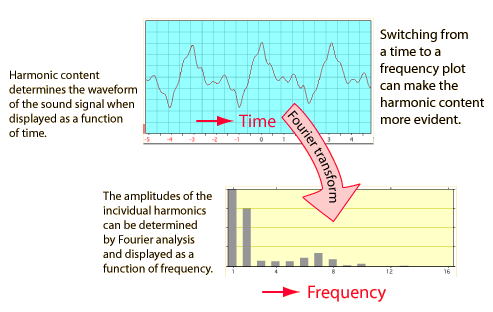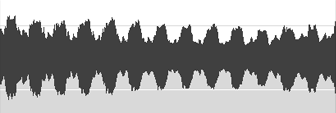Harmonic Content
The primary contributers to the quality or timbre of the sound of a musical instrument are harmonic content, attack and decay, and vibrato. For sustained tones, the most important of these is the harmonic content, the number and relative intensity of the upper harmonics present in the sound.
Some musical sound sources have overtones which are not harmonics of the fundamental. While there is some efficiency in characterizing such sources in terms of their overtones, it is always possible to characterize a periodic waveform in terms of harmonics - such an analysis is called Fourier analysis. It is common practice to characterize a sound waveform by the spectrum of harmonics necessary to reproduce the observed waveform.
The recognition of different vowel sounds of the human voice is largely accomplished by analysis of the harmonic content by the inner ear. Their distinctly different quality is attributed to vocal formants, frequency ranges where the harmonics are enhanced.
| Geometric waves |
| Quality demo: factory whistle, soprano, piano |
Loudness concepts
Hearing concepts
| HyperPhysics***** Sound | R Nave |


